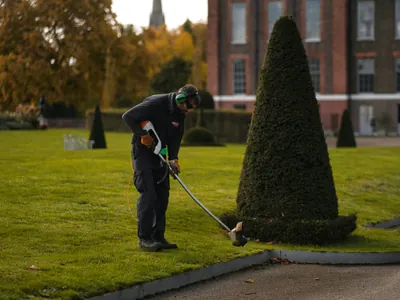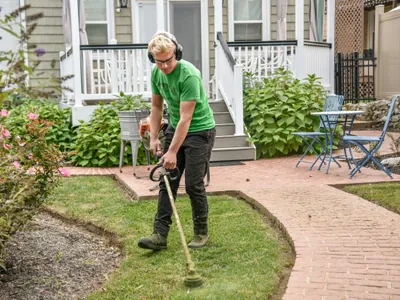Pest Management: Natural and Chemical Solutions

Dealing with pests is a part of any gardener's life. Whether it's aphids on your roses or grubs in your lawn, a pest problem can quickly damage your landscape. A smart approach to pest management, known as Integrated Pest Management (IPM), uses a combination of strategies, starting with the most natural and least harmful methods first, and only resorting to chemical solutions when necessary.
🌿 Level 1: Cultural and Mechanical Controls
This is your first line of defense: creating a healthy environment and physical removal.
🦋 Level 2: Biological Controls
Encourage natural predators to do the work for you.
Beneficial Insects
Ladybugs, lacewings, and praying mantises are voracious predators of common garden pests. You can attract them by planting certain flowers or even purchase them from garden suppliers.
Bacillus thuringiensis (Bt)
This is a naturally occurring soil bacterium that is toxic to specific pests like caterpillars but is harmless to humans, pets, and beneficial insects.
🧪 Level 3: "Soft" Chemical Controls
If the problem persists, move on to less toxic, targeted chemical sprays.
Least-Harmful Sprays:
- Insecticidal Soap: A specially formulated soap solution that is effective against soft-bodied insects like aphids. It must be sprayed directly on the pest to work.
- Horticultural Oil (Neem Oil): This oil-based spray smothers insects and can also help control fungal diseases like powdery mildew.
☠️ Level 4: Conventional Pesticides
Broad-spectrum chemical pesticides should be an absolute last resort.
These pesticides can be effective, but they will also kill beneficial insects, harm pollinators like bees, and can have negative impacts on the environment. Always read and follow the label instructions exactly, and never spray on a windy day or when bees are active.
A balanced approach is the best way to manage pests in your landscape. If you're dealing with a persistent pest or disease problem, contact The Box Advantage Group. Our groundskeeping experts can correctly identify the issue and implement an effective and responsible treatment plan.


